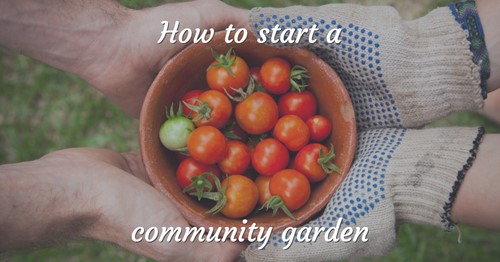Email: [email protected]

Community gardens can be a great way to increase urban farming and maintain the native species of the area. They’re excellent ways to help maintain fresh food while creating green space for folks to enjoy. These gardens can be started by anyone, though you should ensure everyone participating in the project is legally allowed to garden on the property being used.
Here’s a quick guide to creating a community garden that you and your neighbors can enjoy:
The most important starting point is getting the space cleaned up. If there are large or industrial bouts of cement or other materials, be sure to have a certified professional help break up and dispose of those pieces before you get started.
For land with only weeds, dead brush and other organic plant matter, an afternoon of yard work should be all it takes to clean up the area. Once cleaned, you can design your community garden with your neighbors.
After cleaning the area and designing your plots, it’s time to build the containers you’re going to plant in. These containers can be floating garden boxes for smaller items such as herbs or small greenery. For deeper planters, try creating boundaries of concrete or wood.
Once you have your planters created and set up, it’s time to replace the soil. Most home improvement and garden stores will have soil with specific nutrients to help your garden thrive.
With the containers set up, now it’s time to plant your garden. Some plots may be large enough for seed balls, especially if the area is frequented by small creatures or harsh weather. For areas that may not need as much protection, plant seeds evenly and with enough room to start rooting.
Be sure to incorporate some native plants into your community garden to ensure the ecosystem stays intact.

Now you and your community can sit back and watch your garden grow as you all continue to cultivate it together. Anything that isn’t immediately used by neighbors in the community can be donated to local shelters, while the non-edible plants can be used as decoration for your homes and the rest of the neighborhood.

Active in residential brokerage since 1985, Michael enjoys a loyal following of past buyers and sellers. Prior to entering brokerage, he studied culinary arts and managed restaurants in the Boston area. Born and raised in Newton, Michael is very familiar with the Greater Boston area. His seven-day-a-week commitment to his profession serves his clients and customers well. His educational background includes The Johnson & Wales Culinary Institute, The Lee Institute for Real Estate, and The Tom Hopkins and Floyd Wickman Sales Training courses.
In recognition of his completion of the prescribed courses in real estate practice and ethics, Michael has earned the distinguished GRI (Graduate, Realtor Institute) designation. He continues his long-standing membership in the National Association of Realtors and is an avid fly fisherman, musician, and outdoor enthusiast.
Michael was awarded the International President's Circle Award for sales expertise, market knowledge, and dedication to clients for 2020 and 2021. In 2022 and 2023 he was awarded the International Presidents Elite Award, representing the Top 2% of Hammond Residential & Coldwell Banker Agents Worldwide, for demonstrating exceptional sales production, ambition and his commitment to the Real Estate Industry.